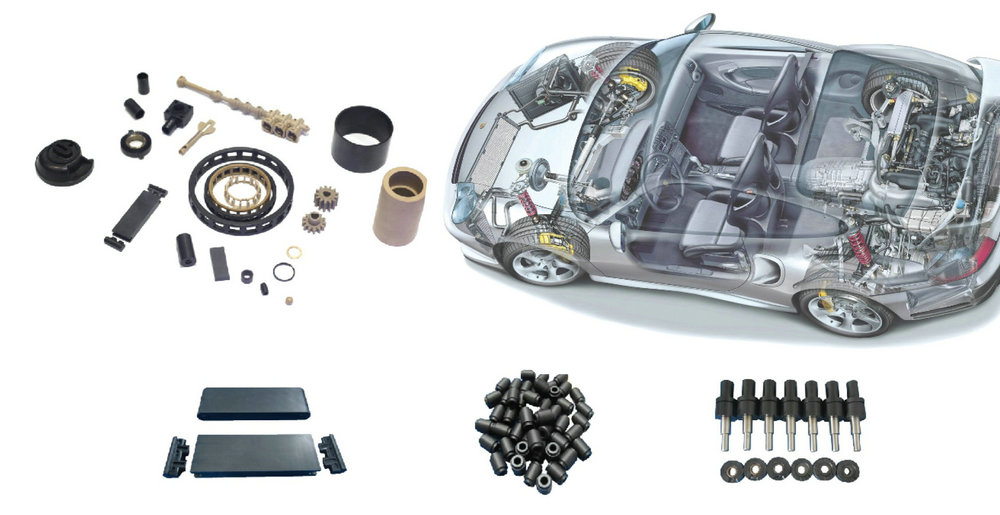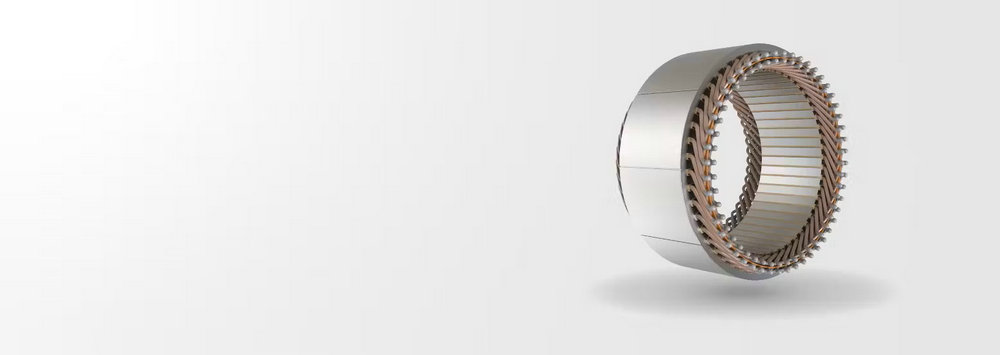
As the world increasingly focuses on reducing carbon emissions and promoting the transition to green energy, PEEK (Polyether Ether Ketone), a high-performance engineering plastic, has become particularly important in the automotive field. PEEK and its modified composites, with their excellent high-temperature resistance, superior mechanical properties, chemical stability, low moisture absorption, dimensional stability, and ease of processing and molding, have become key materials for automotive lightweighting and energy efficiency improvement.
Against the backdrop of rapid development in new energy vehicles, the application of PEEK and its modified composites is not limited to traditional automotive parts but has also expanded to emerging fields such as battery systems, electric motors, and high-voltage electrical systems, providing innovative solutions for the automotive industry.
Below are some specific application examples of PEEK in modern automobile manufacturing:
Engine Components
PEEK and its modified composites can be used to manufacture flat wires for new energy vehicle motors, engine valve bodies, valve seats, and valve cores. With their high-temperature resistance, corrosion resistance, and electrical insulation properties, they can improve engine efficiency and lifespan.
Transmission Systems
In transmission systems, PEEK and its modified composites are used to manufacture clutch plates, bearings, and other components. Their high strength, wear resistance, and high-temperature performance ensure the stability and reliability of transmission systems.
Brake Systems
PEEK and its modified composites can be used to manufacture brake pads and brake discs. Their excellent friction and high-temperature resistance properties can enhance the safety and lifespan of brake systems.
Gearboxes
The high strength and dimensional stability of PEEK and its modified composites make them suitable for manufacturing precision parts for seat adjusters and gears in gearboxes.
Motors
The application of PEEK and its modified composites in new energy vehicle motors is increasing, especially in tire pressure monitoring and high-temperature battery seals, showcasing excellent temperature resistance and corrosion resistance.
Other Components
Electrical Components: The electrical insulation and high-temperature resistance of PEEK and its modified composites make them ideal materials for automotive electrical system components, such as connectors and insulation sleeves.
Interior Components: The surface quality and high-temperature stability of PEEK and its modified composites allow them to be used in manufacturing interior components like dashboards and center consoles.
High-Voltage Fast Charging Systems: In 800V high-voltage fast charging scenarios, PEEK and its modified composites, due to their heat resistance and flame retardancy, become the primary materials for manufacturing enameled wires.
These applications not only highlight the extensive diversity and indispensable importance of PEEK materials in the new energy vehicle industry but also, with the rapid advancement of technology and the growing global demand for high-performance materials, PEEK's application prospects in the new energy vehicle field will undoubtedly become broader and brighter.
In the future, we look forward to PEEK materials playing a more significant role in improving automotive performance, enhancing safety, and promoting energy-saving and emission reduction, thereby helping the new energy vehicle industry move towards a greener, smarter, and more efficient new era.

FAQ
What is the application of PEEK in automotive?
Peek component's robustness and resistance to wear and friction make them suitable for use, such as connectors, bushings, gears, and electrical systems. Additionally, its lightweight nature contributes to fuel efficiency and overall vehicle performance.
What is the chemical composition of PEEK?
Chemical formula of polyetheretherketone (PEEK) Polyaromatic semi-crystalline thermoplastic polymer with chemical structure (-C6H4-O-C6H4-O-C6H4-CO-)n.
What are PEEK composites?
Polyetheretherketone (PEEK) is one of the most capable plastics in the world. Highest strength and stiffness with outstanding chemical and thermal resistance makes PEEK the first choice for applications in medical technology, aerospace and oil and gas production.
What parts are made from PEEK?
Some Examples of parts we can machine from PEEK: Peek O-rings, Peek Seats, Peek Bushings, Peek Bearings, Peek Guide Blocks, Peek Wear Pads, Peek Washers.
What does PEEK stand for?
Polyether ether ketone (PEEK) is a colourless organic thermoplastic polymer in the polyaryletherketone (PAEK) family, used in engineering applications. PEEK is a semicrystalline thermoplastic with excellent mechanical and chemical resistance properties that are retained to high temperatures.
How durable is PEEK?
PEEK plastic is exceptionally resistant to high temperatures and also to wear, chemicals, fatigue, and creep. Its strength-to-weight profile is high enough to rival metals like aluminum, and it will not degrade in chemically or physically harsh environments as metals do.
Is PEEK stronger than carbon fiber?
Compared to neat PEEK, the carbon fibers provide it even higher mechanical strength, high temperature characteristics and superior chemical resistance, making it the material of choice for the harshest environments.
Is PEEK a dielectric material?
PEEK is completely covalently bonded, thus it has no mobile electrons resulting in excellent insulating properties. As a dielectric, however, PEEK is easily polarizable allowing it to store electrical energy. The limit of a dielectric to store this energy is its dielectric strength.
Does PEEK conduct electricity?
PEEK, as a semi-crystalline polymer, possesses excellent electrical insulation properties, meaning it does not conduct electricity. However, being an insulator can lead to the accumulation of static charges on its surface when subjected to friction or rubbing against other materials.